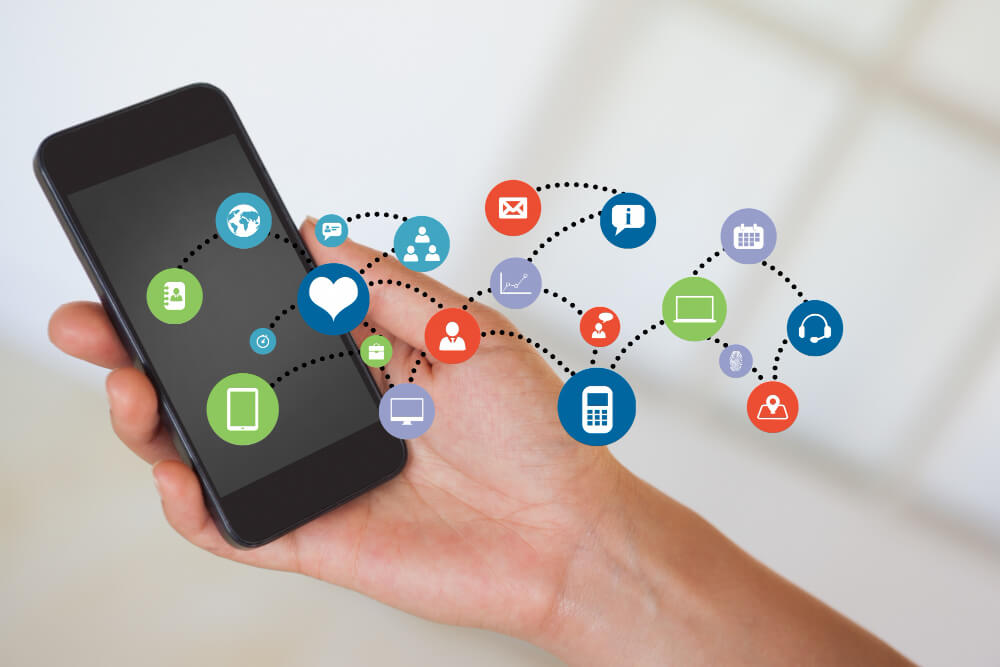In the digital era, businesses are no longer confined to a single communication method with their customers. Today’s consumers expect seamless interactions across multiple platforms and devices, from social media to email and live chat.
This shift has made multi-channel communication essential for modern businesses looking to stay competitive, engage effectively with their audience, and provide superior customer service. In this article, we’ll explore the importance of multi-channel communication and how it can benefit businesses in today’s fast-paced, digitally-driven market.
What is Multi-Channel Communication?
Multi-channel communication refers to using various communication platforms and channels to interact with customers. These can include email, social media, phone calls, SMS, live chat, chatbots, and even in-person interactions. A multi-channel strategy aims to create a unified and seamless experience across all these channels, allowing customers to communicate with the business in the way that suits them best.
Adopting a multi-channel communication strategy is no longer optional; it’s a necessity for modern businesses. Customers expect to be able to reach brands on their preferred platform, whether they are browsing social media, checking their email, or using messaging apps. Businesses that fail to meet customers where they risk losing engagement, satisfaction, and, ultimately, sales.
The Importance of Multi-Channel Communication for Modern Businesses
Consumers today are more connected than ever, using a variety of platforms to engage with brands. As such, businesses must be able to communicate across multiple channels to meet customer expectations. Here are the key reasons why multi-channel communication is critical for modern businesses:
Meeting Customer Expectations
In a world where customers can easily switch between devices and platforms, they expect brands to be accessible wherever they are. Whether they want to ask a question on social media, follow up via email, or use live chat for real-time support, customers demand convenience and flexibility in their business interactions. A multi-channel communication strategy ensures your business is available on all the platforms your customers use, improving their experience and satisfaction.
Increasing Customer Engagement
Multi-channel communication helps to increase customer engagement by providing multiple touchpoints for interaction. By offering customers various ways to connect with your brand, you can engage them on a deeper level and encourage more frequent interactions. Whether through social media posts, email newsletters, or SMS notifications, customers are more likely to stay engaged when they can interact with your brand on their preferred channel.
This increased engagement also helps build stronger relationships with your customers, as they feel your business is accessible and responsive to their needs across multiple platforms.
Improving Customer Satisfaction and Retention
Some customers may prefer the immediacy of live chat or SMS, while others might opt for the more formal nature of email communication. By accommodating these preferences, businesses can provide a more personalized and satisfying experience, which, in turn, boosts customer retention.
When customers know they can reach your business quickly and conveniently, they are likely to remain loyal and continue doing business with you. Multi-channel communication ensures that no matter how customers interact with your brand, they receive the same service and support.

Key Channels in a Multi-Channel Communication Strategy
A successful multi-channel communication strategy involves using a variety of platforms to connect with customers. Here are some of the most important channels to include:
Social Media
Social media platforms such as Facebook, Instagram, Twitter, and LinkedIn are powerful tools for engaging customers and building brand awareness. They allow businesses to communicate in real-time, respond to customer inquiries, and share content that fosters community engagement.
It’s important to monitor social media for mentions of your brand, respond promptly to messages and comments, and create content that connects with your audience. Social media also provides an excellent platform for running promotions, sharing updates, and gathering feedback.
Email remains one of the most effective channels for direct communication with customers. It’s ideal for sending personalized messages, promotional offers, newsletters, and updates. Email allows businesses to stay in touch with their customers more personally, delivering targeted content that encourages engagement and drives conversions.
To maximize email effectiveness as part of a multi-channel strategy, businesses should segment their email lists based on customer preferences, ensuring that each customer receives relevant content.
Live Chat and Chatbots
Live chat is a popular channel for providing immediate customer support and assistance. Many customers prefer the convenience of live chat over waiting on hold for phone support or sending an email. Live chat enables businesses to resolve customer issues in real time, improving satisfaction and reducing friction in the customer experience.
Chatbots also play a key role in multi-channel communication by offering automated responses to common inquiries 24/7. This ensures that customers can receive help outside business hours, enhancing the overall customer experience.
SMS and Messaging Apps
SMS and messaging apps like WhatsApp and Facebook Messenger are becoming increasingly important for businesses looking to engage with customers directly and personally. These platforms offer the immediacy of text-based communication, allowing businesses to send reminders, updates, and promotional messages that are seen instantly.
Messaging apps also allow businesses to build deeper relationships and resolve issues more efficiently by providing opportunities for personalized, one-on-one conversations with customers.
Phone Support
Despite the growing popularity of digital communication channels, phone support remains vital to a multi-channel strategy. Some customers prefer the direct, human interaction that phone calls provide, especially for complex inquiries or issues that require immediate attention.
Benefits of Multi-Channel Communication
Adopting a multi-channel communication strategy provides several key benefits for businesses:
Enhanced Customer Experience
By offering multiple ways for customers to interact with your brand, you create a more seamless and flexible experience. Customers can switch between channels based on their preferences, ensuring they always have access to the support and information they need when they need it. This leads to a more positive experience, which can help improve brand perception and loyalty.
Increased Reach and Engagement
Multi-channel communication expands your brand’s reach by allowing you to connect with customers on the platforms they use most. Whether it’s social media, email, or messaging apps, engaging with customers on their preferred channels increases the likelihood of building meaningful relationships and driving engagement.
Better Data Insights
A multi-channel strategy also allows businesses to gather valuable data from multiple sources. By tracking customer interactions across different platforms, companies can gain deeper insights about customer behavior, preferences, and pain points. This data can refine communication strategies, create targeted marketing campaigns, and improve customer service.
Stronger Customer Relationships
Engaging with customers on multiple channels helps build stronger relationships. Businesses can foster trust and reliability by providing consistent communication across platforms, showing customers they are always available to meet their needs. This, in turn, strengthens customer loyalty and encourages repeat business.
Best Practices for Implementing a Multi-Channel Communication Strategy
To successfully implement a multi-channel communication strategy, businesses should follow these best practices:
Ensure Consistency Across Channels
While offering multiple communication channels is important, it’s equally important to ensure consistency across them. Customers should receive the same level of service, tone of voice, and brand experience regardless of the platform they are using. Consistent messaging helps build trust and reinforces your brand identity.
Use Data to Personalize Interactions
Leverage data from your various communication channels to provide personalized interactions. Use customer insights to tailor responses, offers, and recommendations based on individual preferences and behavior. Personalization helps create more meaningful customer interactions and enhances satisfaction.
Integrate Communication Channels
Your communication channels should be integrated to create a seamless experience. For example, if a customer starts a conversation on social media and later continues it through email, they shouldn’t have to repeat themselves. Integration ensures customer data is shared across channels, allowing for a more cohesive experience.
Conclusion
Multi-channel communication is no longer just a trend; it’s necessary for modern businesses. By offering customers multiple ways to interact with your brand, you can meet their expectations, increase engagement, and improve satisfaction. A well-executed multi-channel strategy helps businesses build stronger relationships, gain valuable insights, and stay competitive in today’s digital landscape.
For more insights on implementing an effective multi-channel communication strategy, explore Supsis’ multi-channel communication solutions and discover how to enhance customer engagement across platforms.






